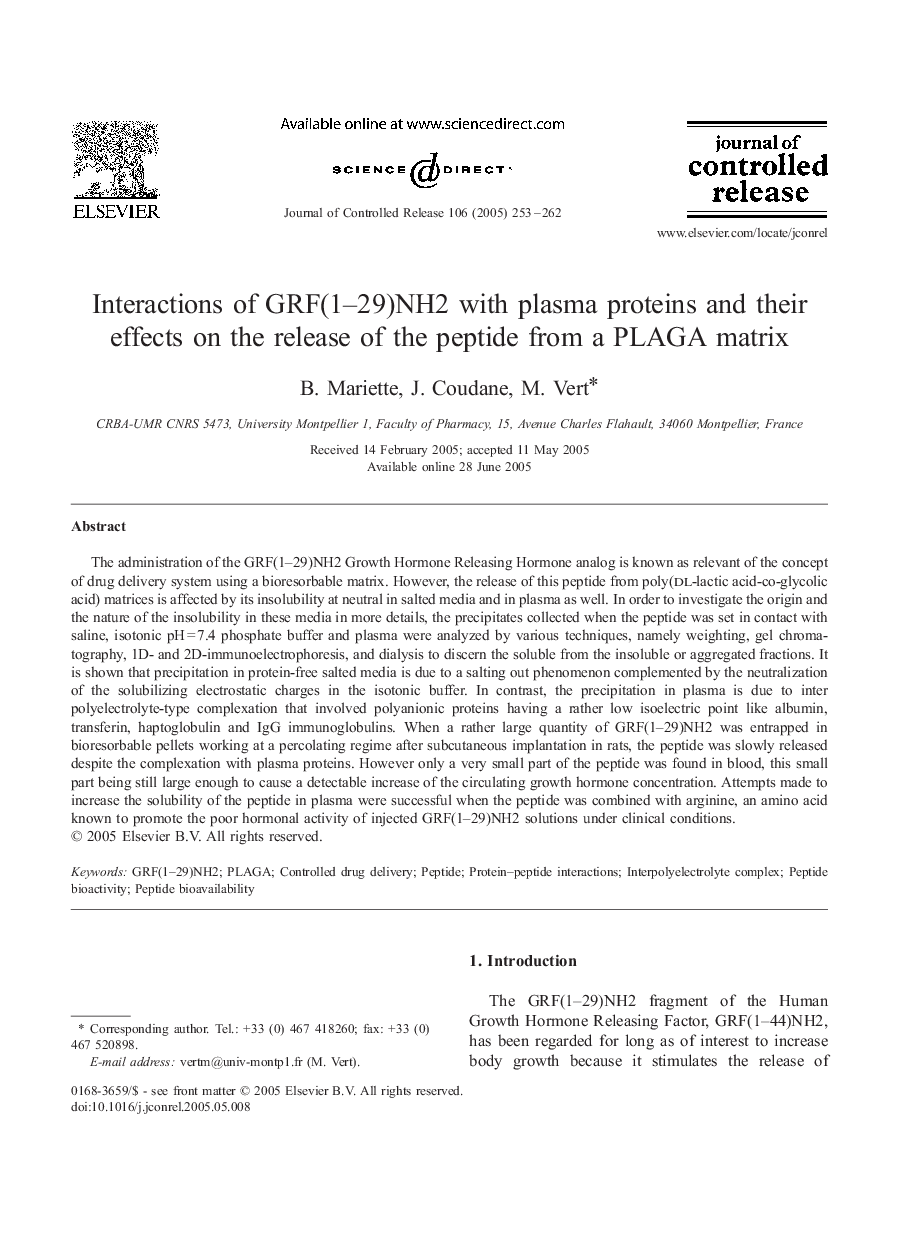| Article ID | Journal | Published Year | Pages | File Type |
|---|---|---|---|---|
| 10613425 | Journal of Controlled Release | 2005 | 10 Pages |
Abstract
The administration of the GRF(1-29)NH2 Growth Hormone Releasing Hormone analog is known as relevant of the concept of drug delivery system using a bioresorbable matrix. However, the release of this peptide from poly(dl-lactic acid-co-glycolic acid) matrices is affected by its insolubility at neutral in salted media and in plasma as well. In order to investigate the origin and the nature of the insolubility in these media in more details, the precipitates collected when the peptide was set in contact with saline, isotonic pHÂ =Â 7.4 phosphate buffer and plasma were analyzed by various techniques, namely weighting, gel chromatography, 1D- and 2D-immunoelectrophoresis, and dialysis to discern the soluble from the insoluble or aggregated fractions. It is shown that precipitation in protein-free salted media is due to a salting out phenomenon complemented by the neutralization of the solubilizing electrostatic charges in the isotonic buffer. In contrast, the precipitation in plasma is due to inter polyelectrolyte-type complexation that involved polyanionic proteins having a rather low isoelectric point like albumin, transferin, haptoglobulin and IgG immunoglobulins. When a rather large quantity of GRF(1-29)NH2 was entrapped in bioresorbable pellets working at a percolating regime after subcutaneous implantation in rats, the peptide was slowly released despite the complexation with plasma proteins. However only a very small part of the peptide was found in blood, this small part being still large enough to cause a detectable increase of the circulating growth hormone concentration. Attempts made to increase the solubility of the peptide in plasma were successful when the peptide was combined with arginine, an amino acid known to promote the poor hormonal activity of injected GRF(1-29)NH2 solutions under clinical conditions.
Related Topics
Physical Sciences and Engineering
Materials Science
Biomaterials
Authors
B. Mariette, J. Coudane, M. Vert,
